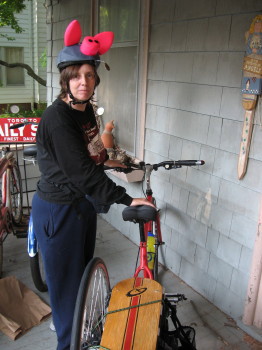Math Practice Sites Review
There are swarms of sites online for “practicing math skills.” However, it’s important to have the *right* kind of practice at the right time.
While a concept is being formed, ideally we’d have a connection between concrete and abstract. This has proven (to me) a real challenge, despite many claims that materials are “visual.” Often, they’re visual because you use your vision to do the problems, but the math you see is symbolic.
Math Fact Café
“Free printable math worksheets for elementary school and home use.”
It is affiliated with Amazon.com and sells products from a products page, but the worksheets are free and ad-free and high quality. You can set a lot of things just the way you want them - including making them big enough for students with "older eyes" to see :-)
http://www.senteacher.org/Enlarge/5/Numberbonds.xhtml - “Cracker Jack Wheels” involve facts and answers as two concentric circles, and a second layer of paper (laminated if you want it to last) with “gaps” in it; the student rotates it until all the facts visible are true.
There are randomly generated practice pages for addition and subtraction, either units or two-digit numbers, and also practice in “number bonds,” which I think are highly underrated. These are the pairs of numbers that add to 10, 20, and 100 respectively.
It’s entirely symbolic, though – just the facts! I’d love to see the “number bonds” concept done with visual examples so that students could see how as one number increases, the other number decreases if they add up to the same number at the end.
“number cards” will print cards with numbers in a sequence; choosing a whole number would mean multiples of that number, but you can also choose negative numbers or decimals, and you can choose your starting point.
“missing links” makes pretty worksheets where students fill in the missing numbers in a line, with a common difference. It can be “5, 10, __ __ 25” but it can also be 3, 8, ___ 18, ____ . However, when you click on “negatives,” you see “-5, -6, ___, -8, ____” … which I would think would inspire students to miss out on the fundamental backwardness of negative numbers.
http://www.mathcasts.org/ - this has student voices (and adults) talking about how they are doing math problems. It has two examples of “mathcasts” that exemplify intuitive vs. procedural approaches. Of *course* the female does it procedurally ;)
Still, it is **all words and sounds.** I like the adult one, though. It starts with “if they were 20 pieces we’d have 2 of them, …” using my Big Idea strategy for “put in big numbers you'll understand and figure out what you would do.” And then realizing he would divide… and then (oh, my!) using one of my other Big IDea strategies of “write it differently in that way that you recognize” and follow the procedure you know.
More to come...


0 Comments:
Post a Comment
Links to this post:
Create a Link
<< Home